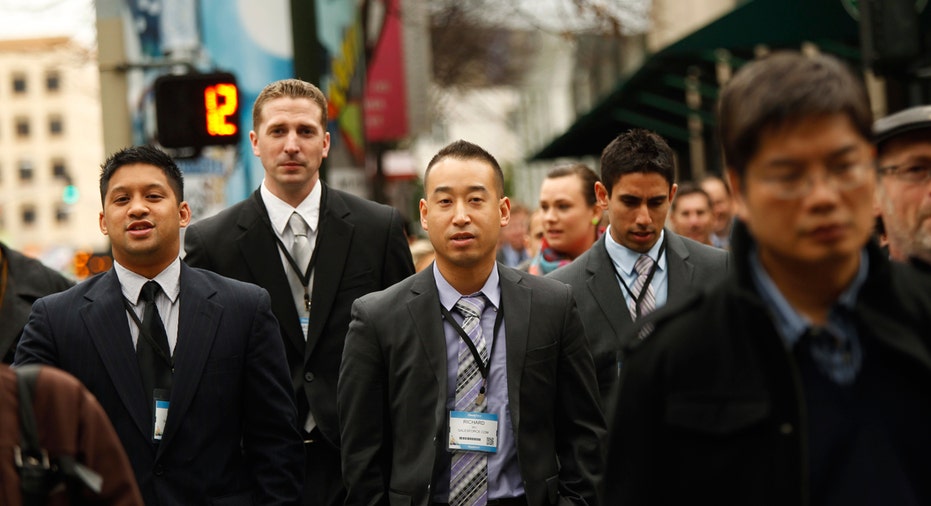May Jobs Report Unlikely to Knock Fed Off Course

With the U.S. economy showing signs of improvement from a weak start to the year, and equity markets having recovered significant first-quarter losses, the Federal Reserve appears primed to raise interest rates this summer for the first time since December.
What’s up for debate is which summer month the U.S. central bank will move rates higher.
On Friday morning, the Labor Department is set to report figures showing the health of the job market during the last month. Economists polled by Thomson Reuters expect to see a gain of 164,000 jobs in May with the unemployment rate ticking down to 4.9% from 5% in April.
The Federal Open Market Committee convenes for two-day policy-setting meetings on June 14 and 15 and again on July 26 and 27. Fed funds futures, a tool used to predict market expectations for changes in U.S. monetary policy, show a 21% chance of a rate hike at the conclusion of this month’s meeting, while the odds jump to 58% for at least one rate rise by July.
Fed officials, including Chairwoman Janet Yellen, have, in recent weeks, reiterated their insistence that any decision to tighten monetary policy would depend on incoming economic data. The latest figures show a mixed picture for the U.S. economy.
In addition to improving housing and consumer data, Yellen, and a host of other policymakers, point to the labor market as one sign of economic strength, while manufacturing and overall economic growth remain tepid.
Dan North, chief economist at Euler Hermes North America said the May jobs report, should it come in particularly strong, could cause the Fed to move sooner rather than later, but data in-line with expectations would most likely keep the Fed on hold until July.
“They want to see wage inflation...that year-over-year rate above 2.5%. If they were to see that, they’d be more inclined to move in June. I don’t think they’ll get that in this report,” he said.
Growth in average hourly earnings has been relatively stagnant for much of the last 12 months. December 2015’s year-over-year increase of 2.6% was the biggest gain in more than six years, though they haven’t risen more than 3% annually since April 2009.
North referenced Wednesday’s release of the Fed’s anecdotal Beige Book report, which described wage inflation as “modest.”
“In other words, there is inflation, but how much? If you compare [that wording] with previous Beige Books, it’s a little more tepid. Wage inflation is short at 2.5% where we’ve been for months. If this report is saying it’s softer, there’s not a reason to expect to see wage increases [in the jobs report],” he said.
He added that the rate of job creation at the 200,000-plus level over the last nine months or so has acted to keep wages down.
Mike Beale, U.S. Bank Private Client Reserve managing director, said it’s reasonable to expect the strong-level of job creation to begin tapering off as the economic cycle forges forward.
“You get to the point where labor markets tighten considerably and job growth starts to slow as ready labor starts to dry up. That’s part of the natural evolution toward the end of the cycle, when the low-hanging fruit has been picked the jobs numbers decline,” he explained.
For that reason, he expects to see the number of jobs created in May around 160,000. Combined with an aging economic cycle, a seven-week labor strike by more than 36,000 union workers at Verizon (NYSE:VZ) is also expected to temper the level of job creation for the month and put downward pressure on payroll growth.
Looking ahead, Beale said the Fed has the opportunity to break what’s been a “catch 22” cycle of hinting at higher rates, then dealing with naturally tighter financial conditions that put the central bank on hold.
“[The Fed] has a chance to break that cycle. You had a number of Fed speakers on tape in the last week, including Yellen, saying that the Fed is likely to raise rates in the next couple months and markets held up pretty well,” he said.
He said his expectation is for a move higher on rates in July.
“If the data comes in very strong…the Fed might be tempted to raise in June but I think that would be a problem because it could put the potential for three hikes on the table this year and the market is really not ready for that,” Beale explained. “If the Fed were to wait until July, it would signal they’re not losing patience.”



















